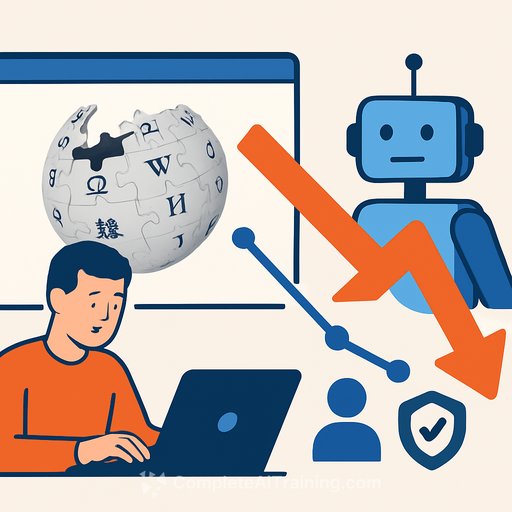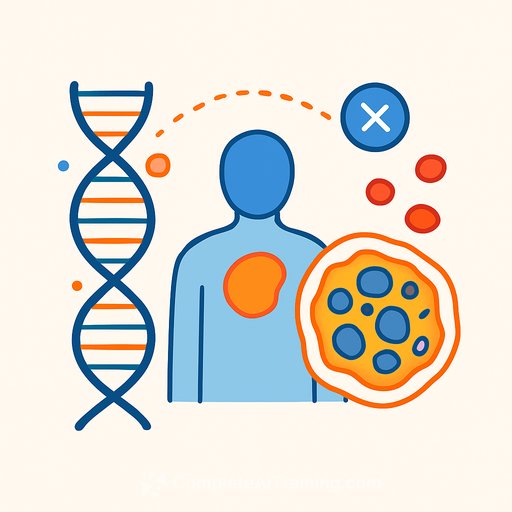Wikipedia's Traffic Dip and the Upshot for Research Teams
Wikipedia is reporting fewer human visits - down about 8% in recent months versus the same period in 2024. Leadership attributes the slide to generative AI and social platforms answering questions directly, often using Wikipedia as source material. That shift changes where people land, and who gets credit, data, and donations.
For scientists and research managers, the takeaway is straightforward: treat Wikipedia as an input, not an endpoint. The platform is still useful, but your workflow should assume summaries may be repackaged, stripped of context, or reflect editorial bottlenecks.
Why the decline matters beyond pageviews
Fewer visits can mean fewer active volunteers and fewer small-dollar donations. That threatens the editorial engine that keeps articles updated and argued over - the process that, for better or worse, produces the summaries you read.
There's also the bias question. Chatbots can mirror or amplify slants present in their training data. Some, including cofounder Larry Sanger, argue Wikipedia's governance and editorial culture embed certain viewpoints while filtering out others, including hot-button topics like intelligent design.
Transparency and governance are under the microscope
Just the News has highlighted Sanger's "nine theses" critique and accounts from editors who say controversial edits were suppressed or locked. A House Oversight Committee probe is examining alleged coordination by editors to influence opinion on sensitive topics, and a former interim U.S. Attorney for D.C. accused the parent organization of violating nonprofit obligations through disinformation. The Media Research Center has also claimed bias in coverage of U.S. political figures.
These are allegations and investigations - not settled facts. But they raise a practical issue for researchers: how much weight to give any single tertiary source, especially on politicized topics.
What this means for your research workflow
- Use Wikipedia as a map, not the territory. Follow citations, then cite the primary literature, datasets, preprints, and official reports.
- Check the article's Talk page and edit history for active disputes, edit wars, and recent locks. High churn signals caution.
- On sensitive topics, compare across at least two independent sources with different editorial incentives (e.g., publisher reports, academic reviews, government repositories).
- If you rely on AI summaries, require source exposure. If a model can't show citations you can verify, treat the output as a lead, not evidence.
- Archive what you cite. Record version IDs and timestamps for Wikipedia pages and key sources to maintain reproducibility.
- Build a bias checklist for your team (claims vs. evidence, language hedging, missing counterviews, funding/affiliation context).
- For internal knowledge bases, monitor referral traffic from search and AI assistants; adjust contribution strategies if reach drops.
Practical checks before you cite
- Trace every claim to an original source. If the citation is secondary, keep digging.
- Read at least the abstract, methods, and limitations sections of the key references. Don't rely on summaries.
- Note page version and date. If the page changed after your analysis, re-verify.
- Flag articles with locked edit status or heavy template warnings; require extra corroboration.
Resources
- Wikimedia traffic statistics - for monitoring usage trends.
- House Oversight Committee - for updates on ongoing probes referenced above.
Strengthen team AI literacy
If your group depends on AI-assisted search or synthesis, set standards for verifiability and bias checks. Short, focused training can help researchers push models for sources and audit claims efficiently.
Explore current AI courses to sharpen retrieval, prompt strategies, and validation workflows.
Bottom line: Wikipedia remains a useful waypoint. Treat it as a starting map, verify every turn, and keep your conclusions grounded in primary evidence.
Your membership also unlocks:






